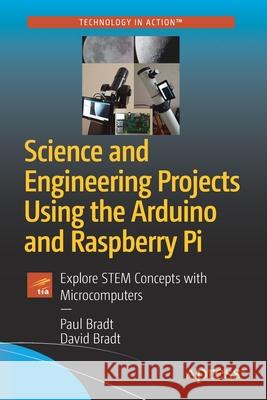Science and Engineering Projects Using the Arduino and Raspberry Pi: Explore Stem Concepts with Microcomputers » książka
topmenu
Science and Engineering Projects Using the Arduino and Raspberry Pi: Explore Stem Concepts with Microcomputers
ISBN-13: 9781484258101 / Angielski / Miękka / 2020 / 238 str.
Science and Engineering Projects Using the Arduino and Raspberry Pi: Explore Stem Concepts with Microcomputers
ISBN-13: 9781484258101 / Angielski / Miękka / 2020 / 238 str.
cena 240,93
(netto: 229,46 VAT: 5%)
Najniższa cena z 30 dni: 231,29
(netto: 229,46 VAT: 5%)
Najniższa cena z 30 dni: 231,29
Termin realizacji zamówienia:
ok. 22 dni roboczych
Dostawa w 2026 r.
ok. 22 dni roboczych
Dostawa w 2026 r.
Darmowa dostawa!
Kategorie:
Kategorie BISAC:
Wydawca:
Apress
Język:
Angielski
ISBN-13:
9781484258101
Rok wydania:
2020
Ilość stron:
238
Waga:
0.37 kg
Wymiary:
23.39 x 15.6 x 1.4
Oprawa:
Miękka
Wolumenów:
01
Dodatkowe informacje:
Wydanie ilustrowane











